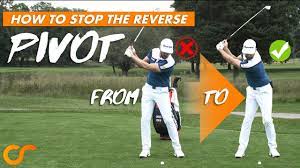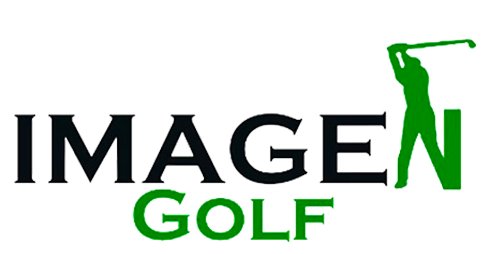
The reverse pivot occurs in the backswing when the golfer's back leg straightens, and the body weight is shifted to the front leg and the upper body tilts toward the target. This motion inhibits amount of torque a golfer can create on the backswing because they cannot rotate their body forcing them to make compensations in their swings on the downswing.
Make a better turn. Think of turning your shoulders and hips level as you swing to the top. This will tilt your spine away from the target and not towards the target.
This reverse pivot or reverse weight shift as it is sometimes called is due to compensation caused by weakness of the back leg's hip, and thigh muscles, specifically the gluteus maximus muscles (buttocks) and the quadriceps. If these muscles are weak, the golfer will not be able to physically handle shifting their weight correctly onto their back leg on the backswing. The golfer will tend to straighten the back leg by locking the knee, which helps support the body weight, and then the golfer will tend to shift the weight to the front leg to maintain balance. A reverse pivot forces the golfer to start the downswing with the upper body, denying them of enough leverage to maximize clubhead speed. A reverse pivot will also put a tremendous amount of pressure on the lower spine, which can cause pain or injury.
Most golf professionals will tell you that common swing faults such as poor posture and lack of rotation or a reverse pivot are from physical limitations and until you address those limitations you may never improve. Are your physical limitations holding you back from playing your best golf?
Understand and identify your swing faults (if you have any) and the physical limitations that may cause them. Swing faults, which are technical flaws in your golf swing, can be caused from physical limitations and or from improper swing mechanics such as lack strength and inflexibility in critical areas of the body.
Your flexibility, strength, coordination, balance and stability, which is your body's ability to maintain certain positions for a length of time, in your golf specific muscles are imperative to making a good golf swing and playing your best. If you have any physical limitations or weaknesses, they will affect the way you swing a golf club. For example, if you have tight hamstring muscles, it will be difficult for you to maintain the correct amount of spine angle during the swing. You may "come out of the shot" or "stand up" through impact, which can cause topped or weak shots. If you lack strength or flexibility in your hips or buttocks, you may not be able to shift your weight properly and as a result lose power and consistency.
Identifying your swing faults and physical limitations are absolutely necessary to building a fundamentally sound golf swing. Identifying and correcting your swing faults and physical limitations should be a focal point in your golf specific fitness program. Playing golf with physical limitations or common swing flaws can cause serious injury to the most vulnerable parts of your body such as the low back, neck, elbows and wrists. Identifying and correcting swing flaws will not only improve your golf game, but also help you prevent the most common golf injuries.
Daniel is the Head of Golf Instruction at IMAGEN Golf the area's leading golf instruction and advisory firm and Best Selling Author of "Unleash The Golfer Within".

